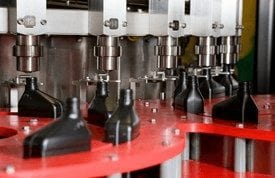
1. Have you ever reduced the running speed of one of machines because it wasn’t running properly? Did that fix the problem?
A common mistake on packaging lines is to reduce the speed of individual pieces of equipment when too many mis-fires occur. While reducing the machine speed may fix some of your timing problems, and thus reduce the number of occurrences in the system, it often masks the real problem and slows the line down unnecessarily.
Timing issues usually occur because of mis-adjustment/alignment or wear. Stretch in chains and wear in bearings can cause timing issues. Identifying the optimal time to replace components can reduce the amount of stops due to wear.
2. Are you using Mean Time before Failure (MBTF) on your line?
Looking at the mean time before failure is a common practice where the typical time-to-failure is calculated for each component of a packaging machine. Parts are replaced on a schedule according to when the parts typically fails (ex. 500 hours).
If you use a MTBF system, you have two choices: replace all your components before they have been fully utilized (expensive), or assume that 50% of your components will fail prior to replacement (not popular with management). Components wear on a cycle that follows a normal distribution bell curve. If you are using the center of the peak of the bell curve (the mean), that means you expect 50% of the components to fail before you replace them. If you try to replace all components before the bell curve starts, you are replacing all your parts before they have lived a full life.
A better approach is to switch to a Predictive Maintenance method. This method takes measurements on each component over a period of time and graphs the results to see where the component is at in its useful life cycle. The goal with predictive maintenance is to provide data that shows a replacement is needed after a full life has been achieved but before wear starts impacting timing.
3. Are your manual work stations balanced?
If you have several stations that perform functions on your packaging line, you need to regularly check that all stations are balanced with the equipment they are interacting with. Observe each of your work stations and look for:
- Is one person really busy while others are standing around? You may need to add more people to the overloaded function.
- Are all your line operators busy or are they often standing around waiting for the next package to come down the line? You may need to either increase speed of your upstream equipment or reduce labor at the manual station.
- Are there any extraneous motions or actions that can be eliminated or improved? Ex. If the conveyor was two inches higher, would that eliminate bending? If the packages came slightly slower or faster, would that improve consistency in operator actions?
For questions or information on how we can help improve your packaging line, contact an engineer today…
